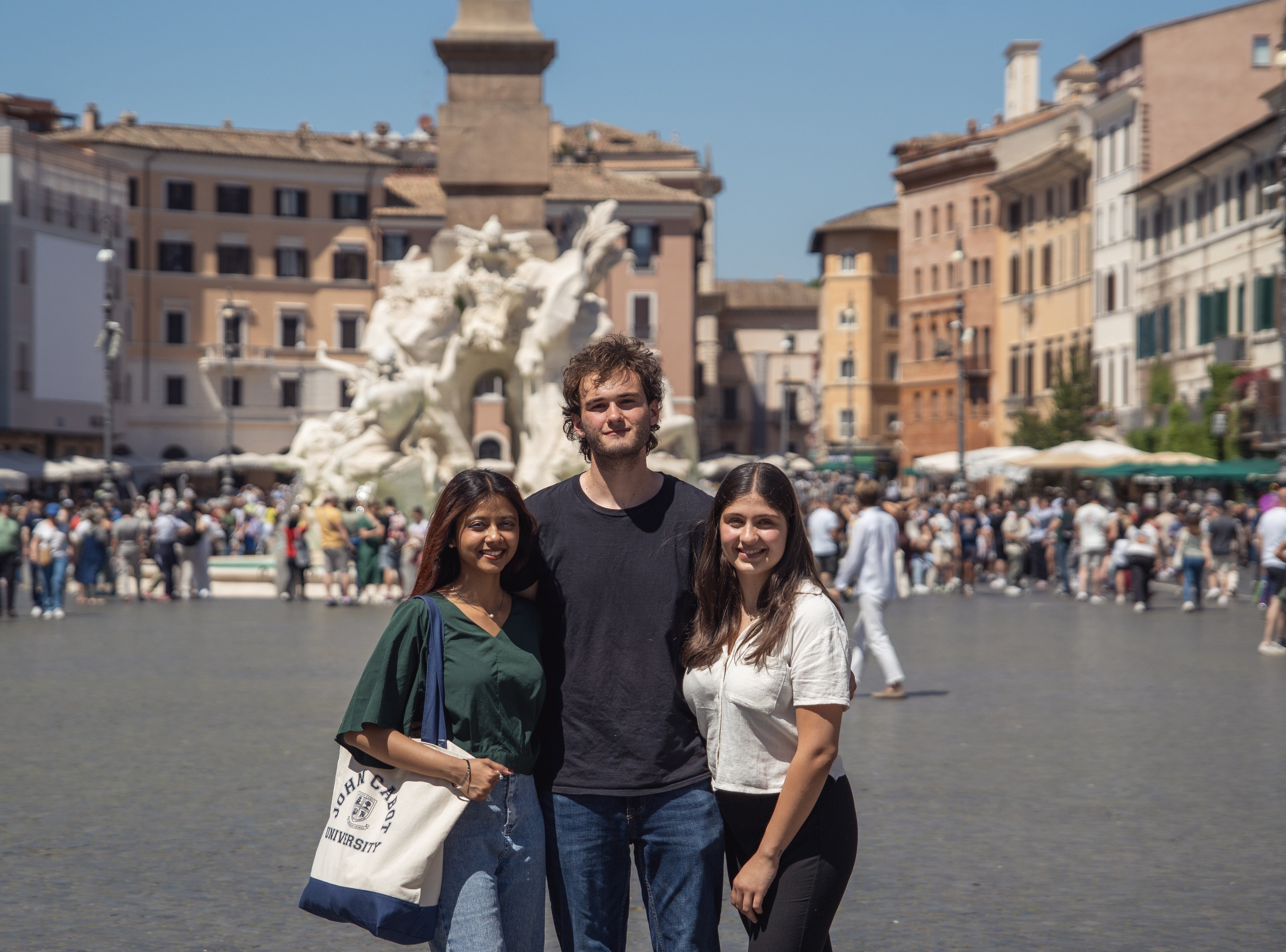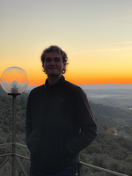

At John Cabot University, our students don’t just study in Rome - they live it. Between classes on our campuses in Trastevere and weekend trips across Italy and Europe, JCU students discover that the Eternal City itself is a classroom filled with history, art, and inspiration at every turn. In this post, senior Eric Linari, a Communications major from Boston, shares his favorite hidden gems in Rome and what it’s like to call this city home while earning your degree at an American university in Italy.
Discovering the Real Rome
Hey! My name is Eric Linari, and I’m from Boston. I always had an itch for traveling and exploring growing up, so John Cabot University in Rome was the perfect choice for me to grow not just academically, but also culturally, and personally as well. I’m now in my last year at JCU majoring in Communications with a minor in Marketing. Living three years in Rome now, I feel like there is still so much more to this city than I could have ever imagined.
Believe it or not, there is more to Rome than just the Colosseum and Trevi Fountain! Having been in Rome for over three years now, I wanted to share some of my favorite hidden gems for people spending their college years at JCU. I know that the temptation to fly away every weekend is enticing, but visiting these lesser-known places can help shift your perspective on the eternal city.
As a current senior at JCU (with a bad habit of wanting to explore over studying), I’ve found myself many weekends just hopping on Rome’s vast public transport network and seeing where the road takes me.

Villa Doria Pamphili: Rome’s Green Oasis
While nature and greenery may seem sparse within the city center, simply venturing out a little further will let you see some of the most beautiful parks Europe has to offer.
Located only a short distance from Trastevere in the neighborhood of Monteverde, Villa Doria Pamphili offers a quiet alternative to the normally bustling streets of Rome. Filled with lakes, playgrounds, villas, and trees as far as the eye can see, Villa Doria Pamphili makes for the perfect destination for a well needed city break. It’s quite easy to lose an entire day here, having a picnic, walking around, reading, or just sleeping under the trees.

EUR: A Glimpse of Modern Roman History
Taking a visit to the EUR district (Esposizione Universale Romana) in the south of Rome is something not a lot of tourists can boast. While located somewhat far from Trastevere and the center, a visit here is more than feasible with Rome’s public transport. Built up by Mussolini during his fascist regime in Italy, EUR is home to architectural finds unlike anywhere else in Rome.
There are several shopping centers, such as the Centro Commerciale Euroma2, large outdoor parks/greenspaces, and the Palazzo Della Civiltà Italiana, also known as the Square Colosseum. Several notable museums are also located in this district, focusing on ethnography and the medieval era in Italy. This is an area of Rome basically tourist free and offers an interesting view on a different era of Italy.

Quartiere Coppedè: A Hidden Corner of Rome
The neighborhood of Ostiense offers a glimpse into Rome’s modern, post-industrial identity. Once dominated by warehouses, gasometers, and power stations, the area has transformed into a vibrant cultural hub. One of its highlights is Centrale Montemartini, a former power plant repurposed as a museum where ancient Roman statues are displayed among turbines and boilers, showing the stark contrast between antiquity and industry. Students with an interest in contemporary culture will be drawn to the district’s vast street art, which covers entire building façades with works by internationally renowned muralists.
The skeletal frames of the disused gas holders, known as the Gasometro, have become icons of the neighborhood and sometimes serve as backdrops for events. Ostiense also has a practical side for student life, with affordable eateries, the massive Eataly food hall, and plenty of cafés and bars that make it easy to spend a full day exploring. Its mix of history, art, and social life makes it one of the most rewarding neighborhoods to discover outside the historic center.

Ostiense: Where Industry Meets Art
Quartiere Coppedè, is one of Rome’s most enchanting hidden gems. Tucked within the Trieste district, it was designed by architect Gino Coppedè in the early 20th century and stands out for its eye-catching mix of styles, with elements such as Art Nouveau, Baroque, Medieval, and fantasy all blending.
Entering through the grand archway, students find themselves in a fairytale-like setting of ornate façades, wrought-iron balconies, intricate mosaics, and sculptural details that seem more cinematic than urban. For JCU students, this quarter offers more than just a pretty stroll: it’s an inspiring case study in architectural fusion and decorative experimentation, perfect for sketching or reflecting on the interplay between tradition and innovation in Rome’s urban fabric. While not being the largest area in total, I would recommend visiting to explore the other styles of Rome, in a neighborhood many gloss over.

Piramide: Where History and Poetry Meet
Located just nearby is the Pyramid of Cestius. Built around 12 BCE to stand as the tomb for Gaius Cestius and standing at 36 meters (118 feet), this monument has stood the test of time. Located at the pyramid itself is also the Non-Catholic Cemetery of Rome. This cemetery holds many famous artists and writers, most notably John Keats and Percy Shelley. The cemetery is free to enter as well, although leaving a donation is encouraged. The cemetery also holds a small colony of cats for all the animal lovers out there!

Discover Your Own Rome
If you do find yourself spending your degree-seeking years at JCU, take some time to explore our home city beyond the main spots. Exploring these neighborhoods reveals Rome’s many layers, from ancient to modern, artistic, and lived-in. From the sweeping avenues of EUR to the deer-filled meadows of Villa Pamphili to the marble pyramid at Porta San Paolo, each district offers a unique perspective on the city.
For JCU students, discovering these underrated spaces means more than sightseeing; it’s about building a personal relationship with Rome, one that balances study with exploration and tradition with innovation. Beyond the crowded piazzas and monuments, a new variant of Rome appears- quiet, colorful, and endlessly rewarding for those willing to wander.
At John Cabot University, studying in Rome means learning both inside and outside the classroom. As Eric’s shows, every neighborhood offers something new to discover — from history and art to the everyday life of the Eternal City. If you’re ready to explore Rome and earn your undergraduate degree in Italy, visit our Admissions page or email admissions@johncabot.edu to schedule an informational call!




